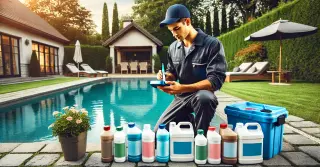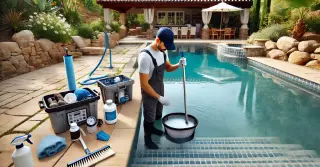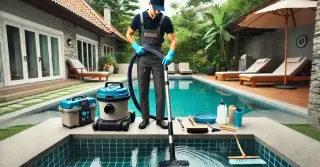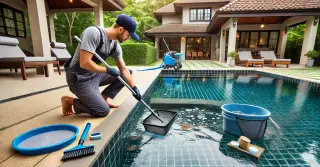Pool Chemical Balance Seminole County FL

Ensuring the right chemical balance is essential for a safe and enjoyable swimming experience. Proper chemical levels prevent the growth of algae and bacteria, keep the water clear and clean, and protect the pool's surface and equipment.
- Optimal pH Balance: Your pool's pH level reflects its acidity or alkalinity. A balanced pH level should be between 7.2 and 7.6. If the pH is too low, the water becomes acidic, which can cause skin irritation and corrosion of pool equipment. Alkaline water from high pH causes cloudiness and scaling. Frequent pH testing and adjustments is vital for swimmer comfort and safety.
- Managing Chlorine Concentration: Chlorine is a key component in pool sanitation, destroying bacteria, algae, and other harmful pathogens. The proper chlorine level is between 1-3 ppm. Insufficient chlorine results in unsanitary conditions, promoting bacteria and algae growth. Too much chlorine can cause skin and eye irritation and cause a strong chlorine smell. Regularly testing and adjusting chlorine levels maintains sanitation and comfort.
Managing Total AlkalinityTotal alkalinity is a crucial element of pool chemistry. Alkalinity acts as a buffer for pH levels, preventing drastic pH fluctuations. Proper total alkalinity levels range from 80 to 120 ppm.
- Stabilizing pH Levels: Proper alkalinity levels help stabilize pH levels, preventing rapid pH changes that irritate skin and damage surfaces. If alkalinity is too low, pH levels can fluctuate wildly, making consistent balance difficult. If alkalinity is too high, it can make the water cloudy and lead to scaling. Consistently monitoring and adjusting alkalinity levels is essential for maintaining a stable and balanced pool.
- Balancing Calcium Levels: Calcium hardness indicates the calcium level in pool water. Proper calcium hardness levels range from 200 to 400 ppm. If calcium levels are too low, the water becomes corrosive, damaging pool surfaces and equipment. High calcium levels lead to scaling and cloudy water. Consistently monitoring and adjusting calcium hardness is essential for pool protection and clear water.
Proper Chemical Use and StorageProper handling and storage of pool chemicals is vital for safety and chemical performance. Store chemicals in a cool, dry place, away from direct sunlight and out of reach of children and pets. Adhere to manufacturer guidelines for dosing and application.
- Measuring and Mixing Chemicals: Measuring pool chemicals accurately is vital for correct balance. Using too much or too little can imbalance chemicals and harm water quality. Always use a clean, dry measuring cup or scoop and never combine chemicals directly. If needed, mix chemicals in water as per instructions.
- Chemical Reaction Awareness: Certain chemicals can react dangerously if mixed. For example, chlorine and acid should never be mixed. Understanding these interactions helps prevent accidents and ensures safe handling. Store chemicals separately and handle each with care to avoid dangerous reactions.
Keeping your pool's chemical balance is vital for a safe, clean, and pleasant swimming experience. By consistently testing and adjusting pH, chlorine, alkalinity, and calcium, you can keep your pool water in optimal condition.
Safe use and storage of pool chemicals further ensure the health and safety of your pool and its users.




